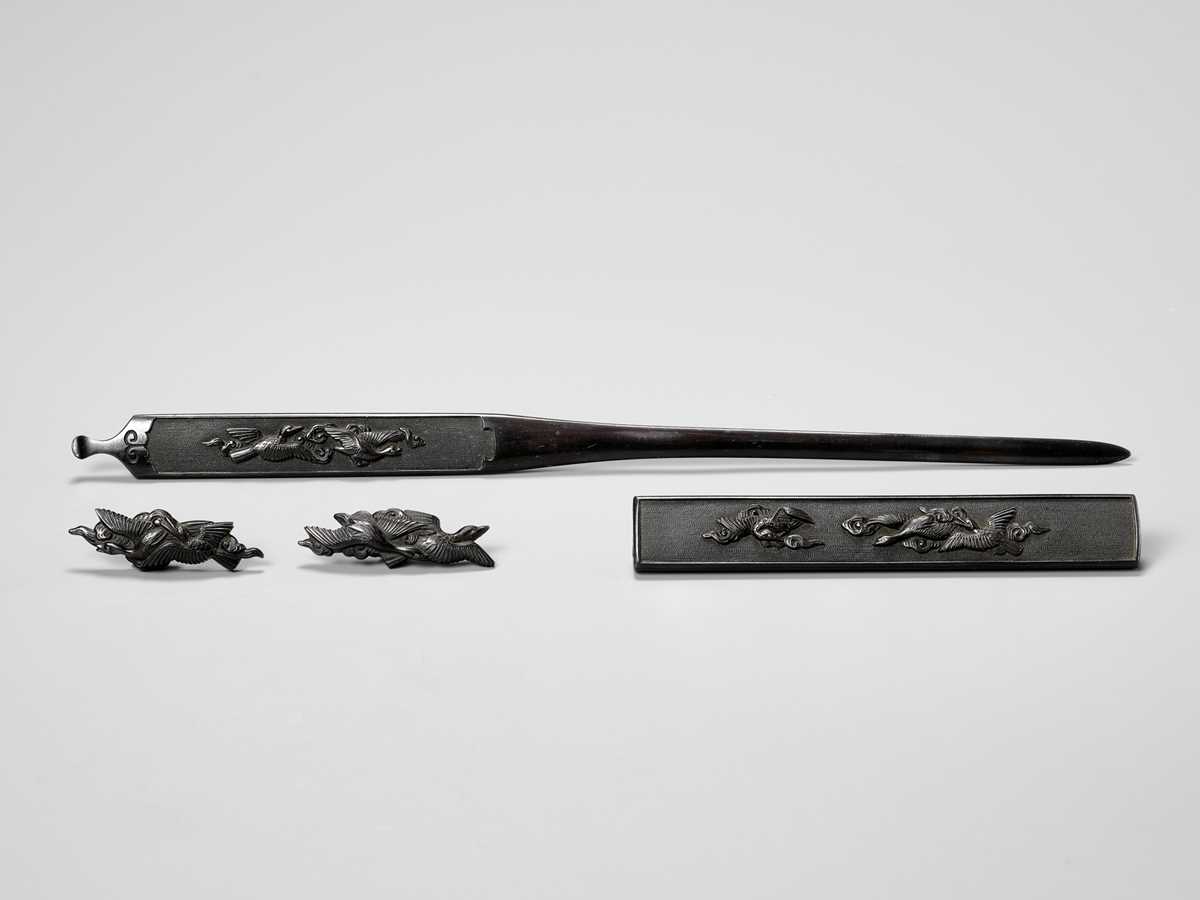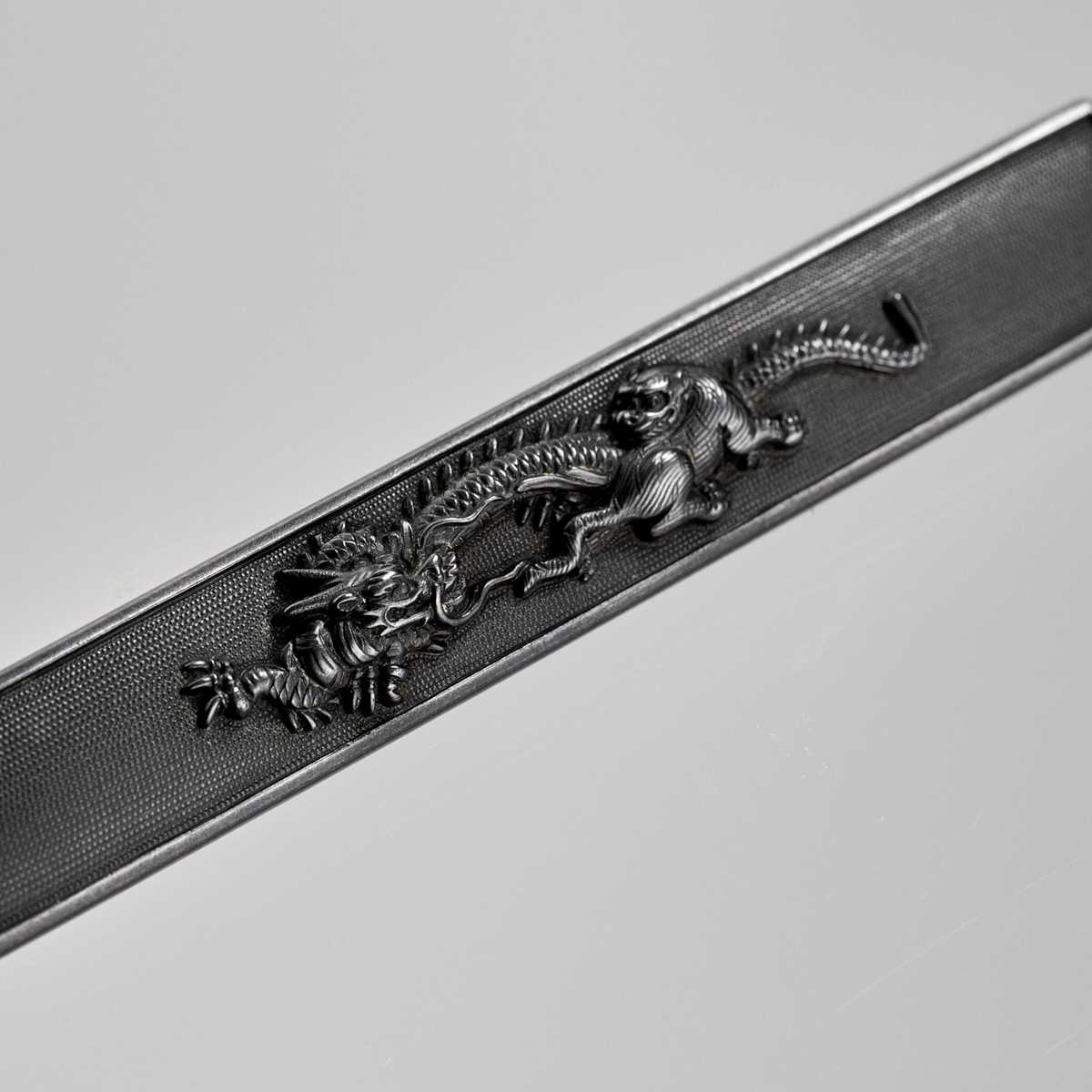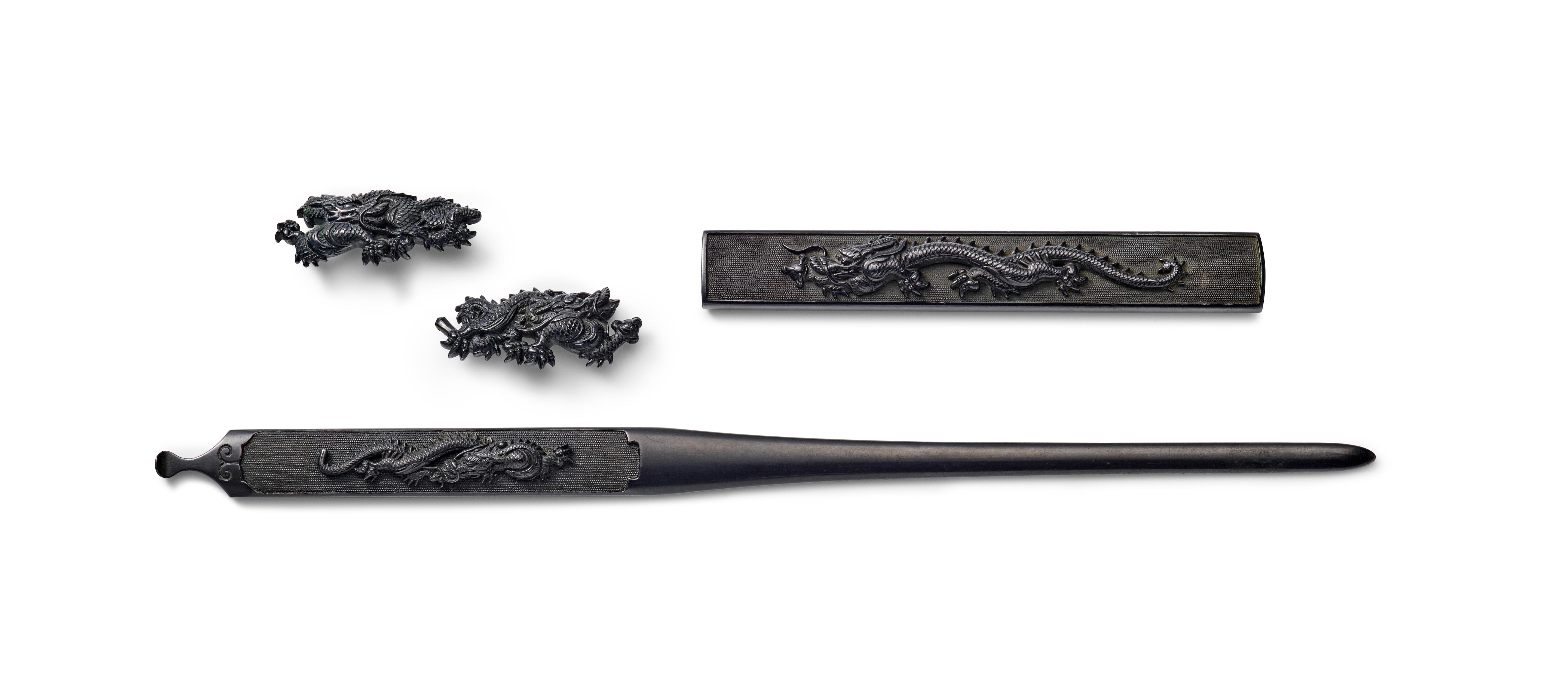A GOTO SCHOOL MITOKOROMONO EDO PERIOD (CIRCA 1650), ATTESTED TO GOTO TEIJO BY GOTO HOJO The kogai and kozuka have a shakudo nanako plate decorated in high relief inlay of gold, silver, and shakudo . The decoration depicts various seashells. The gold-covered frames have a yasurime surface. The backs are inscribed Mon Teijo Mitsuaki with kao . The pair of menuki are formed of gold, silver and shakudo as a pile of clam shells-- kogai length 21.2cm., width 1.2cm., thickness 5.25mm; kozuka length 9.6cm., width 1.4cm., thickness 6.5mm. Black lacquer storage box within a wood box. Inner box with inscription by Sato Kanzan, dated summer, 1975. Accompanied by a tokubetsu kicho certificate issued by the N.B.T.H.K., no. 177, dated April 15th, 1971.
A GOTO SCHOOL MITOKOROMONO EDO PERIOD (CIRCA 1650), ATTESTED TO GOTO TEIJO BY GOTO HOJO The kogai and kozuka have a shakudo nanako plate decorated in high relief inlay of gold, silver, and shakudo . The decoration depicts various seashells. The gold-covered frames have a yasurime surface. The backs are inscribed Mon Teijo Mitsuaki with kao . The pair of menuki are formed of gold, silver and shakudo as a pile of clam shells-- kogai length 21.2cm., width 1.2cm., thickness 5.25mm; kozuka length 9.6cm., width 1.4cm., thickness 6.5mm. Black lacquer storage box within a wood box. Inner box with inscription by Sato Kanzan, dated summer, 1975. Accompanied by a tokubetsu kicho certificate issued by the N.B.T.H.K., no. 177, dated April 15th, 1971.















Testen Sie LotSearch und seine Premium-Features 7 Tage - ohne Kosten!
Lassen Sie sich automatisch über neue Objekte in kommenden Auktionen benachrichtigen.
Suchauftrag anlegen